Kingdom Plantae Family Cucurbitaceae Species C. melo Rank Variety | Order Cucurbitales Genus Cucumis Scientific name Cucumis melo var. makuwa | |
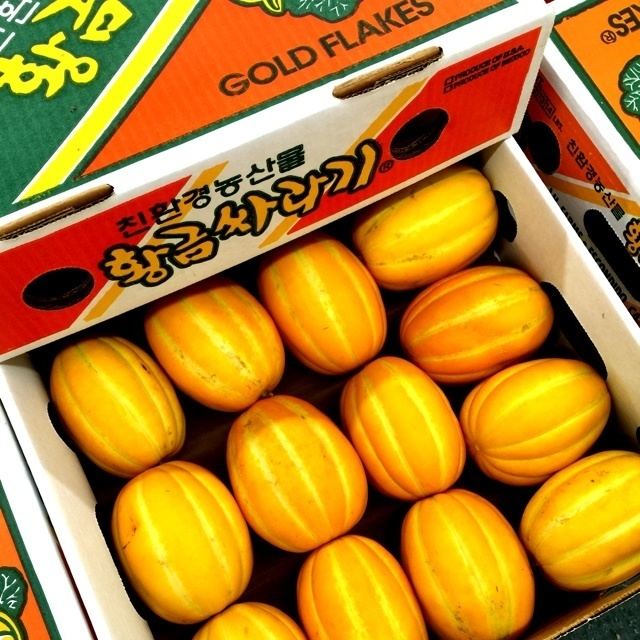 | ||
Similar Melon, Persimmon, Watermelon, Dekopon, Muskmelon | ||
How to prepare and enjoy a korean melon
The Korean melon (Cucumis melo L. var. makuwa) or chamoe (참외), following its Korean name, is a type of melon primarily grown in Korea. The fruit is typically about half-foot (15 cm) long and weighs slightly over 1 pound (0.45 kg). It has smooth, oblong with white stripes that run the length of the fruit. It has white flesh that is juicy and sweet, and the seed cavity is filled with small white seeds. Although most Korean melons marketed is yellow in color, there are variant cultivars of green or ivory colors. The flavor has been described as a cross between a honeydew melon and a cucumber. The fruits are usually eaten fresh; with its thin rind and small seeds, the melon can be eaten whole. The melon is eaten as pickled with spices as common side dish in Korea, called chamoe jangajji.
Contents
- How to prepare and enjoy a korean melon
- Korean melon
- Origin
- Ecology
- Botany
- Varieties
- Cultural significance
- Other uses
- References
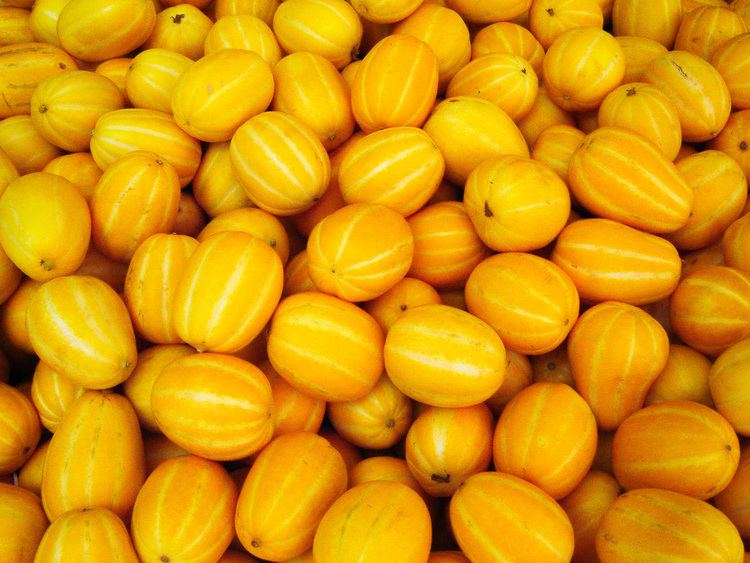
Korean melon
Origin
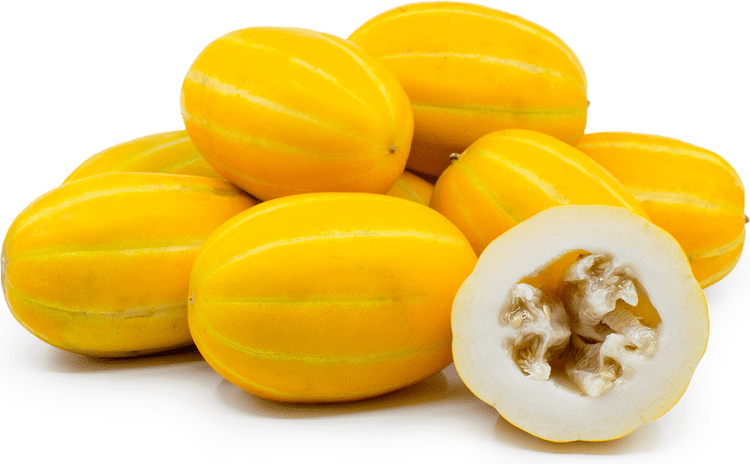
The word chamoe is a composite of words: cham meaning "true" and oe meaning "melon" or "cucumber". Phylogenetic studies tracing the genetic lineage of the plant suggest that the Korean melon may have originated in East India. They were then thought to have been introduced to China from the west via the Silk Road.
Ecology
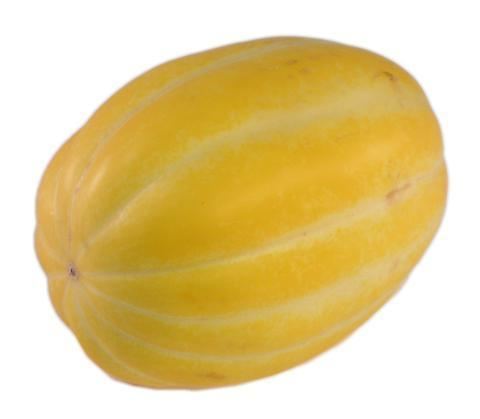
The Korean melon is a cool sub-temperate crop, growing best with day temperatures between 24 and 28 degrees Celsius and night temperatures between 16 and 24 degrees Celsius. It requires good sunlight and rich, well-drained, friable, and moisture-retaining soil. It is drought tolerant, but requires sufficient water for optimal growth.
Botany
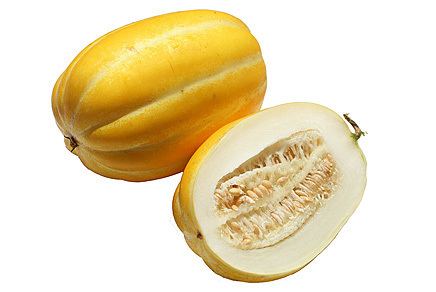
The plant, a cucurbit, is an annual herbaceous plant that branches and trails. The stem is angular and hirsute (hairy) and 7mm in diameter. The leaves are reniform (kidney-shaped) with 5-7 lobes. It is andromonoecious (both bisexual and male flowers on same plant) with yellow flowers.
Varieties
There are two major landraces of Oriental melon, Sunghwan and Gotgam. The Gotgam Korean melon has the aroma of a dried persimmon, as reflected by its name. These two landraces contain more nutrients and have greater disease resistance than other varieties.
Cultural significance
South Korea National Treasure nos. 94 and 114 are both formed like the Korean melon.
The annual Yeoju Geumsa Oriental Melon Festival (여주 금사참외축제) is held once a year, and visitors can sample the melons there.
There is a Korean Melon Ecology Center in Seongju County, designed to educate the public regarding the cultivation and other aspects of the fruit.
Other uses
The Korean melon has also been used as cattle feed.
In Korean folk medicine, the fruit has been used for acute gastritis, fever, mental disorders, dysuria, jaundice, alcoholism, and hyperesthesia/paralysis. The apex has been used as an emetic and for hepatitis, constipation, syphilis, jaundice, and edema. The leaves have been used for blisters and alopecia, and the seeds for indigestion and cough.
Research suggests that the hexane extract of the seeds could be used as a way to control type 2 diabetes. When hexane was used to extract fatty acids, it was found to contain linoleic acid, oleic acid, and palmitic acid. The hexane extract was found to inhibit the enzymes alpha-glucosidase and alpha-amylase. Theoretically, this could decrease the levels of blood sugars for patients with type 2 diabetes. the seeds of the melon is also edible and contains some nutrients.
